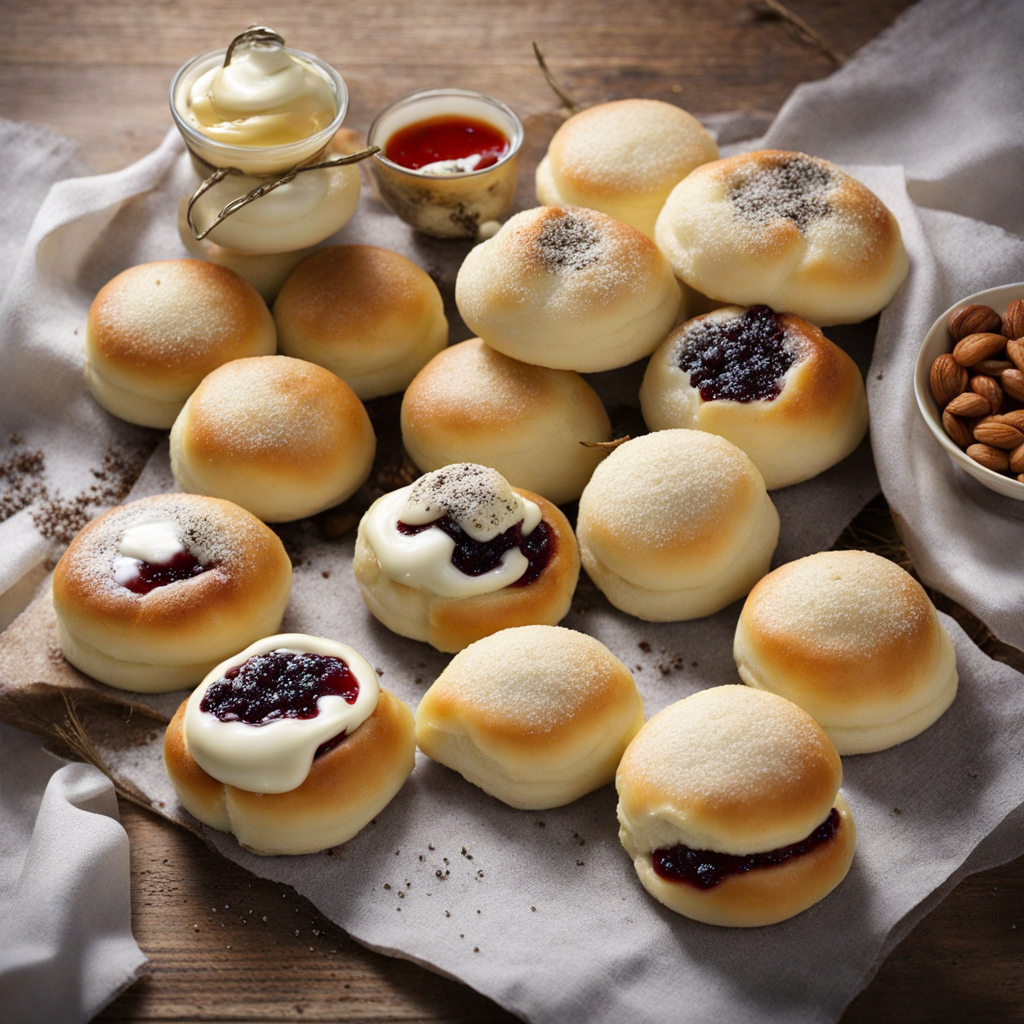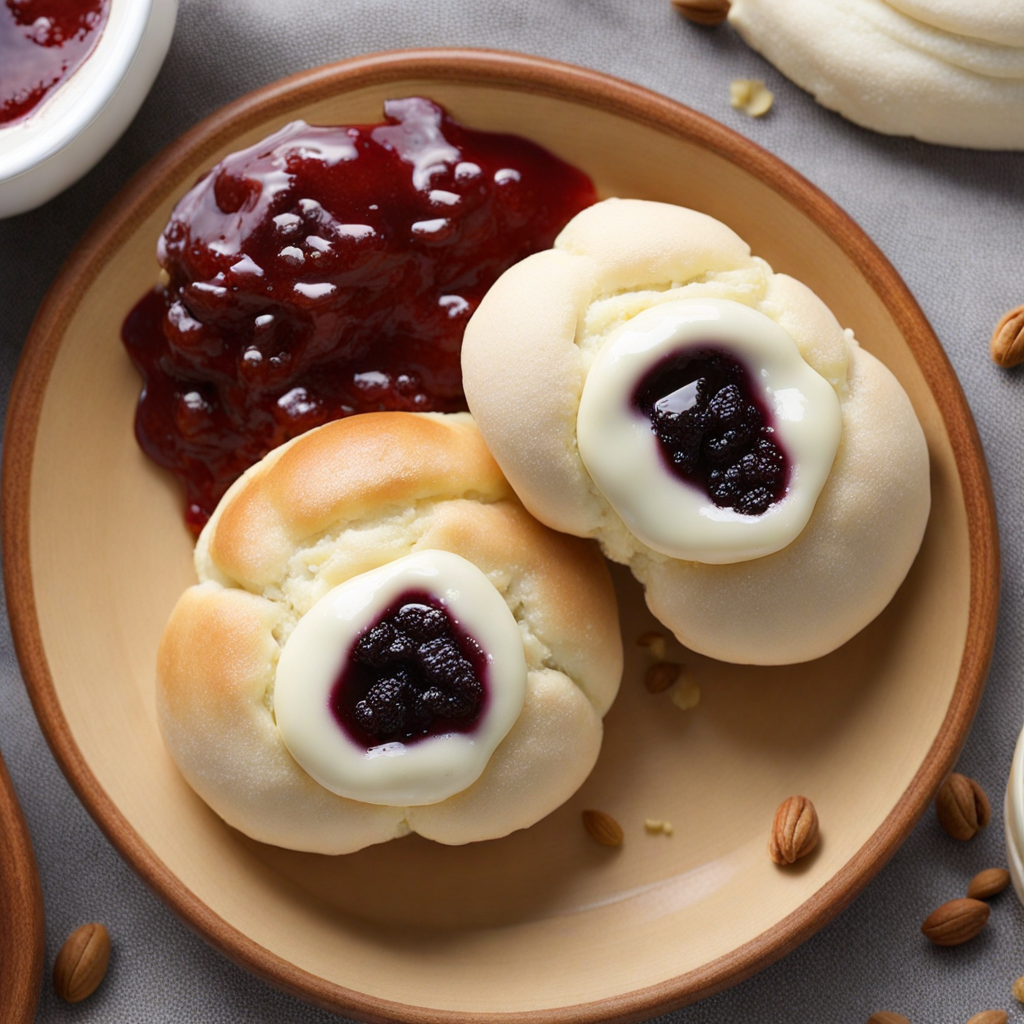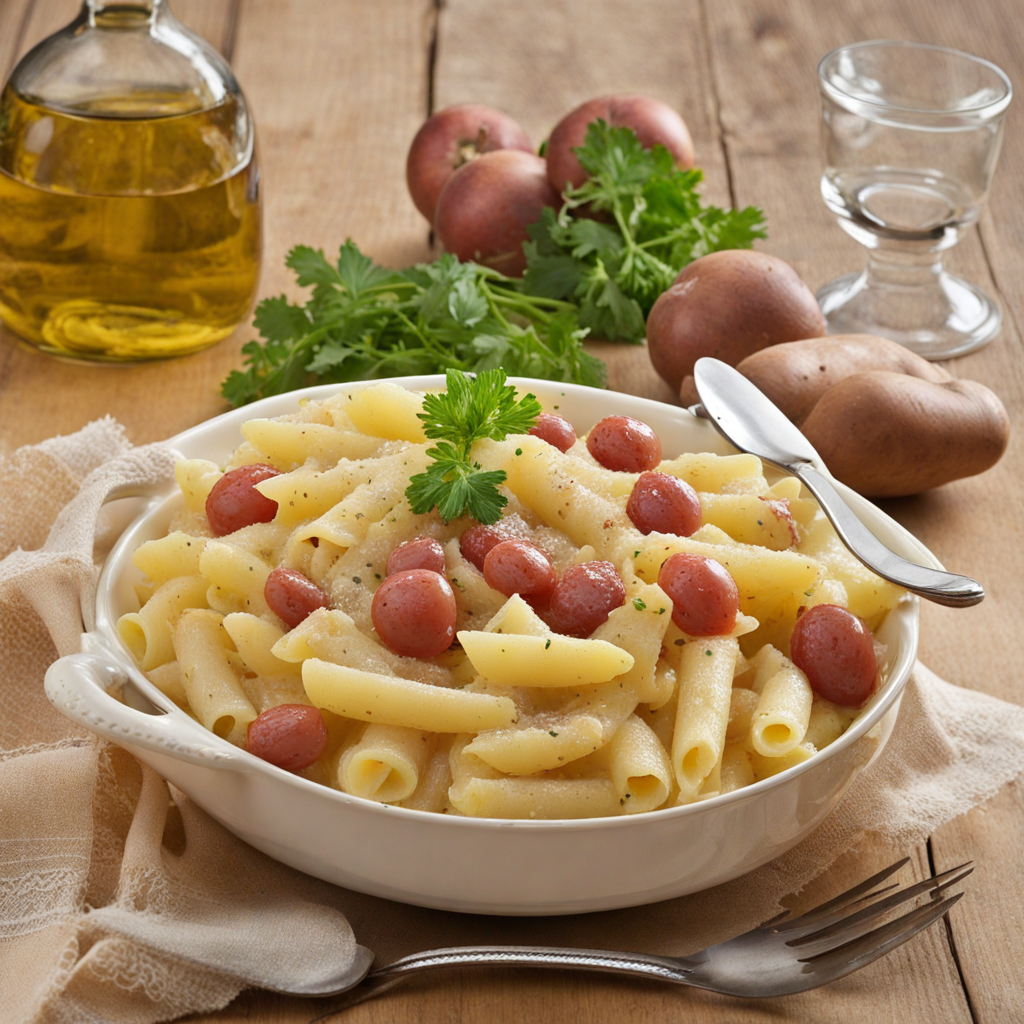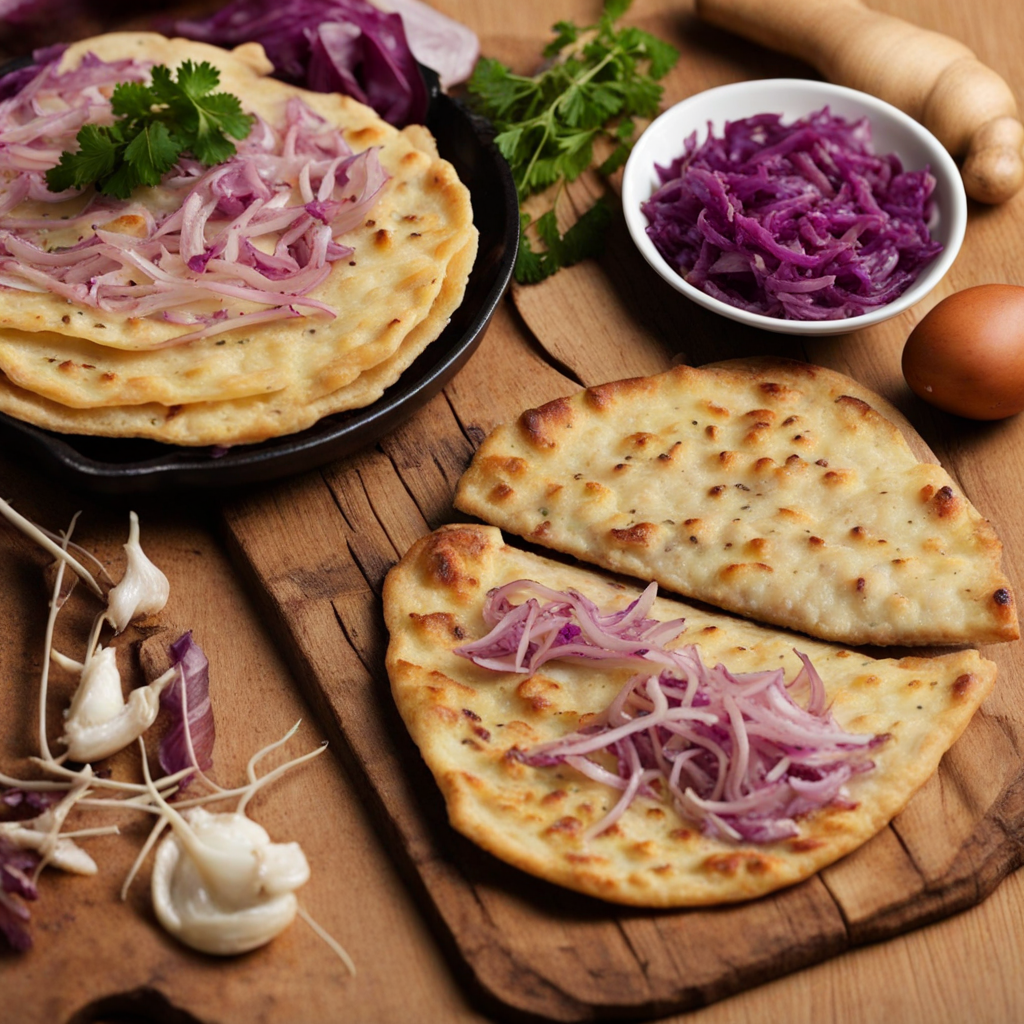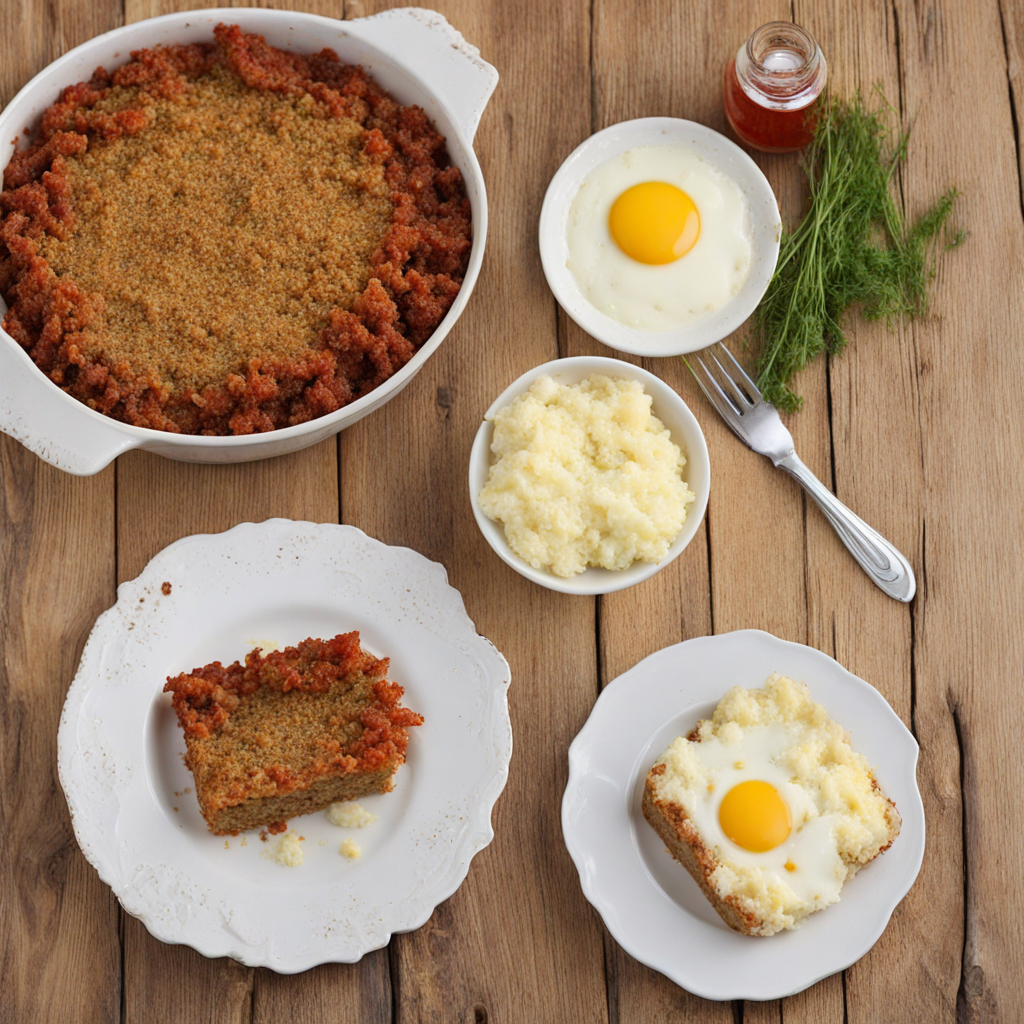Parené Bucht
Parené Bucht, a delightful Slovakian treat, is a soft and fluffy steamed bun that captures the essence of comfort food. These pillowy pastries are made from a simple yeast dough, which is skillfully kneaded and allowed to rise until it becomes airy and light. The dough is then shaped into individual portions and filled with a variety of sweet fillings, such as fruit preserves, sweet cheese, or poppy seeds. The steaming process gives the buns their signature texture, making them incredibly tender and moist, creating a melt-in-your-mouth experience that is hard to resist. What truly sets Parené Bucht apart is its versatility in fillings, allowing for endless flavor combinations. Traditional fillings often include apricot or plum jam, while some variations might feature a sweetened quark cheese mixture, infused with vanilla or lemon zest for an extra layer of flavor. The buns are typically served warm, often dusted with powdered sugar or accompanied by a dollop of cream, enhancing their sweetness and adding a touch of elegance to this humble dish. Each bite reveals a delightful balance of flavors, making them a perfect treat for breakfast, dessert, or an afternoon snack. Parené Bucht is not just a food; it is a cherished part of Slovakian culture and tradition, often prepared during family gatherings and festive occasions. The process of making these buns can be a communal activity, bringing families together to share recipes and techniques passed down through generations. As you savor each mouthful, you will not only indulge in a unique taste but also partake in a slice of Slovak heritage that celebrates togetherness and the joy of sharing delicious food.
How It Became This Dish
Parené Buchty: A Culinary Journey Through Slovak Tradition Introduction Parené buchty, a delightful Slovak pastry, is a testament to the rich tapestry of Eastern European culinary traditions. These steamed sweet buns, often filled with fruit, poppy seeds, or sweet cheese, have a history that intertwines with the cultural and social fabric of Slovakia. Their origins, significance, and evolution tell a story of resilience, community, and the enduring love for traditional food. Origins and Historical Context The roots of parené buchty can be traced back to the austere culinary practices of rural Eastern Europe. The concept of steaming dough as a cooking method can be linked to ancient techniques used across various cultures. In Slovakia, as in many regions, the availability of ingredients dictated the types of food produced. The primary components of parené buchty—flour, water, yeast, and sugar—are simple yet fundamental staples in the diet of the Slovak people. The exact origins of parené buchty are difficult to pinpoint, as they likely evolved from a blend of influences from neighboring countries, particularly Austria and Hungary, where similar steamed buns are found. The term "buchty" itself is derived from the German word "Buchteln," a nod to the Austro-Hungarian Empire's culinary influence on Slovakia. As Slovak territories were part of this empire, culinary traditions intermingled, leading to the birth of unique regional recipes. Cultural Significance Parené buchty hold a cherished place in Slovak culture, often associated with family gatherings, celebrations, and regional festivals. Traditionally, they were prepared for special occasions such as weddings, holidays, and communal feasts, symbolizing unity and the joy of shared experiences. The process of making parené buchty often involved the entire family, fostering a sense of togetherness and continuity across generations. In Slovak folklore, food is imbued with symbolic meanings, and parené buchty are no exception. The act of steaming represents purification and renewal, akin to the cycle of life and the changing seasons. These buns, filled with sweet ingredients, reflect the abundance of the harvest, making them a staple during fall festivities when communities celebrated the fruits of their labor. Development Over Time As Slovak society evolved, so did the recipes and preparation methods for parené buchty. In the early 20th century, with industrialization and urbanization, the reliance on home-cooked meals began to wane. However, the traditional recipe persisted, often adapted to modern tastes and conveniences. The introduction of commercial yeast and pre-packaged ingredients allowed for quicker preparation, enabling busy families to enjoy this beloved dish without the labor-intensive process of traditional dough rising. In the post-World War II era, as Slovakia became part of Czechoslovakia and later an independent nation, the culinary landscape underwent significant changes. The socialist regime promoted the idea of a unified national identity, which included the celebration of traditional foods. Parené buchty became emblematic of Slovak cuisine, featured prominently in cookbooks and food fairs. The emphasis on local ingredients and traditional recipes contributed to a revival of interest in parené buchty, with chefs and home cooks alike innovating new fillings and presentation styles. Today, parené buchty can be found in bakeries and restaurants throughout Slovakia, showcasing a variety of fillings that reflect both traditional and contemporary tastes. While the classic fillings of plum jam, poppy seeds, and sweet cheese remain popular, modern interpretations have introduced creative options such as Nutella, berries, and even savory variations filled with meats or vegetables. This adaptability speaks to the enduring appeal of parené buchty as a canvas for culinary creativity. Regional Variations As with many traditional dishes, regional variations of parené buchty exist, each with its unique twist. In some areas, the dough is enriched with milk or eggs, resulting in a richer flavor and softer texture. Some families add spices like vanilla or citrus zest to the dough, enhancing the overall taste. The fillings also vary by region; while eastern Slovak varieties may lean heavily on poppy seeds, western Slovak versions might favor sweet cheese. In addition, there are also festive variations of parené buchty that are crafted for specific holidays. For instance, during Christmas, they are often made with a special twist, incorporating spices and often served with a side of sweet sauce or syrup. During Easter, they might be dyed in vibrant colors to celebrate the season of rebirth and renewal. Contemporary Revival and Global Appreciation In recent years, there has been a resurgence of interest in traditional Slovak foods, including parené buchty, both in Slovakia and among the Slovak diaspora around the world. This revival is partly fueled by a broader trend towards sustainability and local sourcing of ingredients. As people become more conscious of their food choices, the appeal of homemade, culturally significant dishes grows. Culinary enthusiasts and food bloggers have played a significant role in bringing parené buchty into the global spotlight. Social media platforms showcase the beauty and diversity of these buns, inspiring home cooks to try their hand at making them. Cooking classes and cultural events celebrating Slovak cuisine have become more prevalent, allowing people to connect with their heritage through food. Conclusion Parené buchty are more than just a delicious pastry; they encapsulate the history, culture, and evolution of Slovak culinary traditions. From their humble beginnings to their status as a cherished symbol of togetherness and celebration, these steamed buns continue to evolve while maintaining their roots. As Slovak cuisine gains more recognition on the global stage, parené buchty stand as a delicious reminder of the importance of food in bridging generations and cultures, making them a true icon of Slovak heritage.
You may like
Discover local flavors from Slovakia


